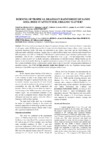Use este identificador para citar ou linkar para este item:
http://www.alice.cnptia.embrapa.br/alice/handle/doc/1055947Registro completo de metadados
| Campo DC | Valor | Idioma |
|---|---|---|
| dc.contributor.author | LIMA, M. O. | pt_BR |
| dc.contributor.author | DICK, D. P. | pt_BR |
| dc.contributor.author | COSTA, F. de S. | pt_BR |
| dc.contributor.author | COSTA, J. B. da | pt_BR |
| dc.contributor.author | LARA, L. Z. | pt_BR |
| dc.contributor.author | PERALBA, M. do C. | pt_BR |
| dc.date.accessioned | 2016-11-07T11:11:11Z | pt_BR |
| dc.date.available | 2016-11-07T11:11:11Z | pt_BR |
| dc.date.created | 2016-11-07 | pt_BR |
| dc.date.issued | 2016 | pt_BR |
| dc.identifier.citation | In: INTERNATIONAL CONFERENCE OF INTERNATIONAL HUMIC SUBSTANCES SOCIETY, 18., 2016, Kanazawa. Keystone for future Earth: Natural Organic Matter (NOM) in diverse environments: proceedings... Kanazawa: IHSS, 2016. | pt_BR |
| dc.identifier.uri | http://www.alice.cnptia.embrapa.br/alice/handle/doc/1055947 | pt_BR |
| dc.description | This study aimed to investigate the impact of vegetation burning on the content and chemical composition of soil organic matter (SOM) along a profile of a sandy Acrisol in Southwestern Amazon, Brazil, within 3 years after experiment beginning(YAB).The study was performed in Rio Branco, Acre State, and the forest burning was performed under controlled conditions. Samples from 6 depth(0-100cm depth)were collected under burned forest (BF) and primary forest (PF) at 1 YAB and 3 YAB. Besides Cand N contents, humic substances and biomarkers were determined. Under PF, the C content decreased with depth from 12 to 2 g kg-1.C/N ratio ranged from 7.6 at the surface to values around 3 at 1 m depth, indicating a predominance of microbial products. Humin fraction was not detected in the whole profile. Burning of vegetation promoted an increase of C and of humic acids only at 0-5 cm. The n-alkane distribution showed a shift towards smaller chains in the 0-5 cm of BF, indicating main contribution of microbial products. Also PAH?s of high molecular weight were detected in this site. Vegetation burning imparts alterations on the SOM composition, but these tend to disappear within 3 years. | pt_BR |
| dc.language.iso | eng | eng |
| dc.rights | openAccess | eng |
| dc.subject | Queimada controlada | pt_BR |
| dc.subject | Rio Branco (AC) | pt_BR |
| dc.subject | Acre | pt_BR |
| dc.subject | Amazônia Ocidental | pt_BR |
| dc.title | Burning of tropical brazilian rainforest of sandy soil: does it affect soil organic matter? | pt_BR |
| dc.type | Resumo em anais e proceedings | pt_BR |
| dc.date.updated | 2016-11-07T11:11:11Z | pt_BR |
| dc.subject.thesagro | Composição Química | pt_BR |
| dc.subject.thesagro | Floresta Tropical | pt_BR |
| dc.subject.thesagro | Matéria Orgânica | pt_BR |
| dc.subject.thesagro | Solo Arenoso | pt_BR |
| dc.format.extent2 | 2 p. | pt_BR |
| riaa.ainfo.id | 1055947 | pt_BR |
| riaa.ainfo.lastupdate | 2016-11-07 | pt_BR |
| dc.contributor.institution | Maurifran Oliveira Lima, Universidade Federal do Rio Grande do Sul; Deborah P. Dick, Universidade Federal do Rio Grande do Sul; FALBERNI DE SOUZA COSTA, CPAF-Acre; Janaína B. da Costa, Universidade Federal do Rio Grande do Sul; Larissa Zacher Lara, Universidade Federal do Rio Grande do Sul; Maria do Carmo Peralba, Universidade Federal do Rio Grande do Sul. | pt_BR |
| Aparece nas coleções: | Resumo em anais de congresso (CPAF-AC)  | |
Arquivos associados a este item:
| Arquivo | Descrição | Tamanho | Formato | |
|---|---|---|---|---|
| 26192.pdf | 239,44 kB | Adobe PDF |  Visualizar/Abrir |









